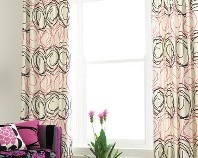Adding Color to Your Walls
 March 21, 2009
March 21, 2009 
Irwin Weiner ASID -- Color is very visceral. It's very emotive for people. Picture a white room or a black room -- people feel very different in different colored spaces.
One way to choose color for a room in your home is to follow the advice of master interior designer Samuel Botero. I was told by a friend that he led one of his clients to the refrigerator and said, "Alright, here are the vegetables. Pick your colors." And food in the fridge made up the colors his client chose: hot peppers, green peppers, butternut squash, etc.
Different spaces call for different colors, and even different countries and the quality of the natural light in different parts of the world often determines appropriate color palettes. England is often dark, gloomy, and gray, and the Victorians went with very bright colors for porcelain, paint, and accessories.
Scandinavia, with its relatively weak sunlight, inspired pale grays and whites in home colors (see photo below). By contrast, Country French has its palette inspiration from hot and sunny hues. Mixing up colors and appropriate connotations can be sometimes jarring, like having hot colors in Scandinavian interiors. (Although rules should always be broken!)

In times before the 20th Century, color pigments were very expensive. Cobalt blue was made from lapus lazuli. Turquoise came from turquoise gemstones.
 colors,
colors,  decorating,
decorating,  home,
home,  painting,
painting,  tips,
tips,  wall in
wall in  Irwin Weiner,
Irwin Weiner,  interior design
interior design 













